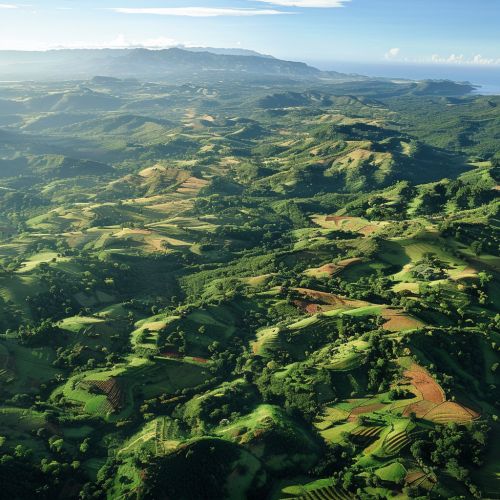Dominican Republic
Geography
The Dominican Republic is located in the Caribbean region, sharing the island of Hispaniola with Haiti. It is the second-largest country in the Antilles by area, with a diverse topography that includes high mountain ranges, fertile valleys, arid regions, and coastal plains. The country's highest peak, Pico Duarte, and its largest lake, Lake Enriquillo, are both significant geographical features.


History
The history of the Dominican Republic can be traced back to the Taino people, who inhabited the island before the arrival of Christopher Columbus in 1492. The Spanish colonization that followed led to the establishment of Santo Domingo, the oldest continuously inhabited European settlement in the Americas. The country gained independence from Spain in 1821, only to be occupied by Haiti shortly after. The Dominican War of Independence in 1844 resulted in the establishment of the Dominican Republic as an independent nation.
Politics
The Dominican Republic is a democratic republic, with a multi-party political system and a President who serves as both the head of state and head of government. The country's political structure is defined by its constitution, which establishes the separation of powers among the executive, legislative, and judicial branches. The Dominican Liberation Party and the Modern Revolutionary Party are among the most prominent political parties in the country.
Economy
The Dominican Republic has the largest economy in the Caribbean and Central American region. Its economy is primarily based on services, but also has strong sectors in agriculture and mining. The country is known for its production of sugarcane, tobacco, and coffee, and is also a major exporter of gold, silver, and nickel. Tourism also plays a significant role in the country's economy, with the Dominican Republic being one of the most popular tourist destinations in the Caribbean.
Culture
Dominican culture is a rich blend of influences from the indigenous Taino, Spanish colonizers, African slaves, and other immigrant populations. This is reflected in the country's music, cuisine, sports, and festivals. The Merengue and Bachata are popular forms of music and dance that originated in the Dominican Republic. Baseball is the most popular sport in the country, with many Dominicans excelling in professional leagues around the world.
